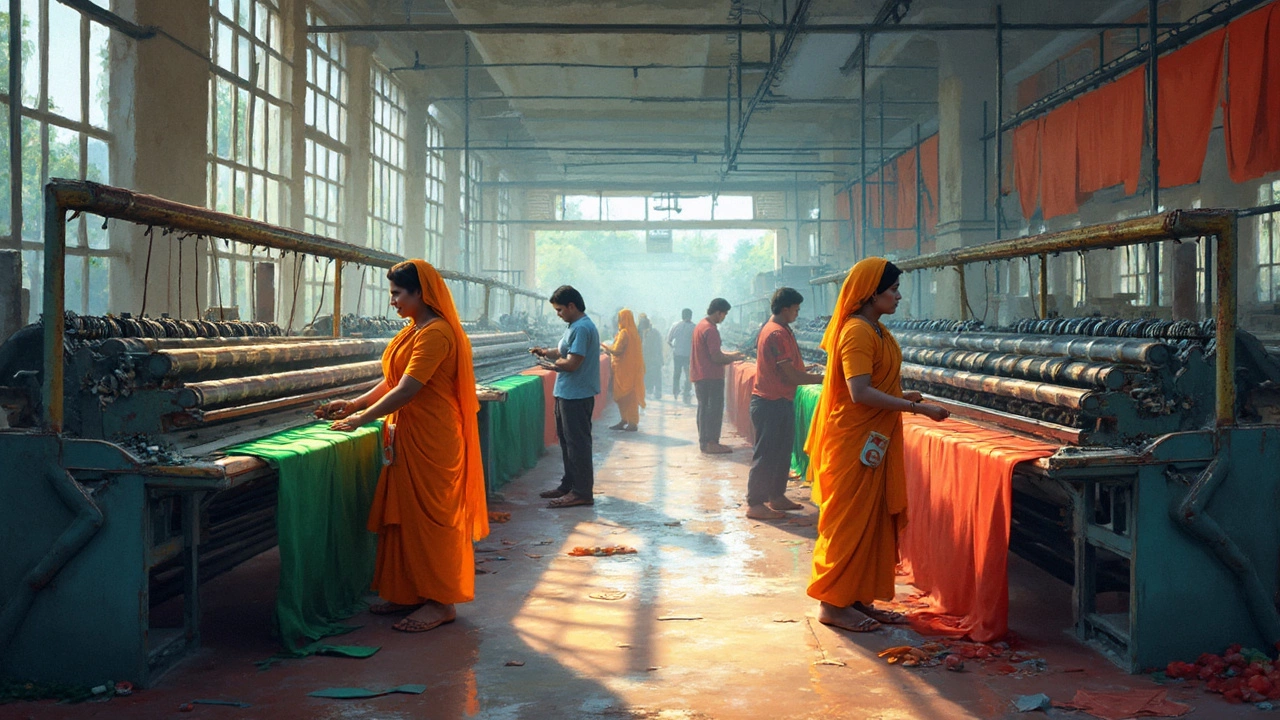- Furniture Import Costs from India: What You Really Pay Jun 18, 2025
- Indian Textile Industry Collapse: What Really Happened and What It Means for Manufacturers Apr 23, 2025
- Richest Pharmacist in the World 2025 - Who Holds the Fortune? Oct 10, 2025
- Top 2 Manufacturing Businesses to Watch in 2025 Oct 18, 2025
- Biggest Steel Supplier in the US: Market Leaders, Facts, and Industry Tips Jul 30, 2025
Indian Fabric Leaders: Who Shapes the Country’s Premium Textiles
If you’ve ever wondered why a silk scarf from Varanasi feels different from a cotton shirt made in Gujarat, the answer lies in the people and companies behind the cloth. India’s fabric scene isn’t just about quantity; it’s about heritage, technology, and a few big names that set the standards for quality and price.
Who Are the Major Players?
The first name most people hear is Raymond. With over a century in the game, Raymond turned plain wool into a fashion statement for men and women across the country. Their blend of traditional looms and modern mills lets them produce everything from formal suits to affordable suiting fabric.
Next up is Arvind Limited. Known for denim, Arvind also makes high‑end cotton and blended fabrics that power many Indian and global brands. Their focus on sustainable processes and digital printing has attracted fashion houses looking for eco‑friendly options.
When it comes to luxury silk, Sanjay Silk from Varanasi and Kashmir’s Pashmina cooperatives dominate. They source raw silk from local farmers, then hand‑weave or hand‑loom each piece, preserving techniques that have existed for generations.
Don’t forget the newer tech‑driven firms like Welspun India. They export massive volumes of bed‑linen and towels, but their recent push into high‑thread‑count cotton and linen shows they can play in both mass and premium markets.
What Makes Luxury Fabrics So Expensive?
First, the material itself. Natural fibers like pure mulberry silk, cashmere, and high‑grade alpaca cost more because they’re harvested in limited quantities and need careful handling. A single kilogram of raw silk can take over 2,500 silkworm cocoons – that adds up fast.
Second, the craftsmanship. Hand‑loomed fabrics require skilled artisans, and their wages reflect years of training. In places like Kanchipuram, each saree may involve dozens of workers for days, and that labor is baked into the final price.
Third, design and finishing. Hand‑painted motifs, natural dyeing, and special finishes like anti‑pilling or moisture‑wicking add extra steps. These processes often use eco‑friendly chemicals that are pricier than synthetic alternatives.
Finally, brand reputation plays a role. Companies that have built trust over decades can charge a premium because buyers know they’re getting consistent quality. This trust also helps them export to markets where “Made in India” is a mark of value.
For anyone looking to buy or source Indian fabrics, start by checking the maker’s background. Look for certifications like Make in India or sustainability badges, and ask about the source of raw material. A transparent supplier will gladly share details about where the fiber comes from and who made the final product.
In short, India’s fabric leaders blend tradition with tech, raw material quality with skilled labor, and a reputation built over decades. Understanding these factors helps you appreciate why a simple piece of cloth can cost a lot – and why it’s often worth the price.
Who is the King of Textiles?
- Aarav Sekhar
- Apr 16, 2025
Uncover the dynamic world of India's textile industry, where historical roots meet modern innovation. Explore major players shaping the sector and discover why India holds a pivotal role in global textile production. With insights into the balance between tradition and technology, this article offers a detailed look at the factors that place these manufacturers in a league of their own.
